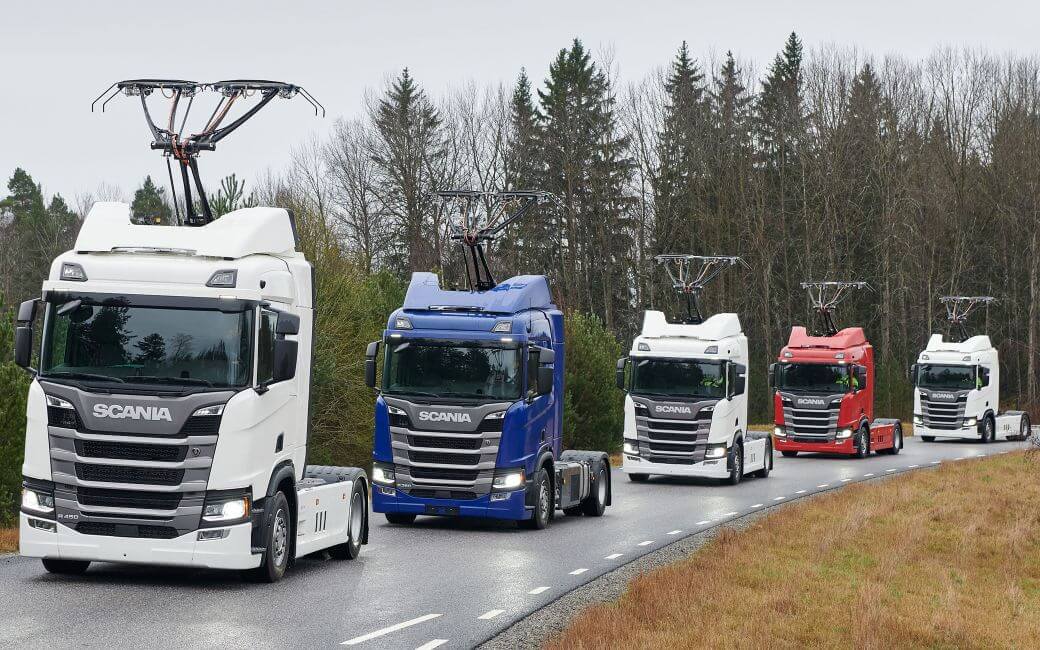The German Heidelberg Institute for Energy and Environmental Research has published a comparative analysis using the findings from a bigger study called “Electrification potential of freight and bus transport – My eRoads”.
The comparison of the greenhouse gas emissions of different drives for the year 2030 shows that battery-electric HGVs emit around half the CO2 compared to diesel trucks – regarding power generation and truck production.
Additionally, the use of a pantograph can significantly reduce the battery sizes required for the lorries and thus tends to further improve the climate balance.
Climate benefits
Apart from traditional diesel HGVs, the study examined the pros and cons of using pantograph technology (particularly for long-distance routes) and hydrogen-electric trucks.
In a direct comparison with battery and pantograph trucks, fuel cell HGVs were found to be economically competitive only if hydrogen prices were extremely low.
What’s more, sourcing cheap hydrogen won’t make the lorries environmentally friendly. CO2 emissions from H2 battery cell vehicles can only be lower than those of overhead line trucks’ if the hydrogen for the trucks is almost exclusively generated from renewable sources.
Taking into account the high demand for H2 from other sectors, this requirement is difficult to meet in practice.
The results of the study clearly show that hydrogen produced with the German electricity mix will not be able to keep up with diesel technology in 2030 in terms of costs or CO2 balance.
With or without state aid, electric HGVs will still be cheaper at the end of the day
What does that mean for the future? In 2030, hauliers will almost always opt for a battery-electric vehicle from a cost perspective, predicts the study.
Due to their clear cost disadvantage, fuel cell trucks should only be used where the use of battery HGVs fails due to practical reasons. The rate of this failure partly depends on the state’s willingness to invest in infrastructure.
“Technology and costs are clearly in favour of electric trucks. It is now the task of the state to promote the expansion of stationary charging infrastructure on the main routes and to examine where this can be sensibly supplemented by an overhead line network. Then heavy goods traffic can make a significant contribution to the climate goals in the transport sector,” says study leader Julius Jöhrens.
But due to the low operating costs, battery and pantograph HGVs will pay off even without state aid, despite the higher acquisition costs for the hauliers, the research concluded.









